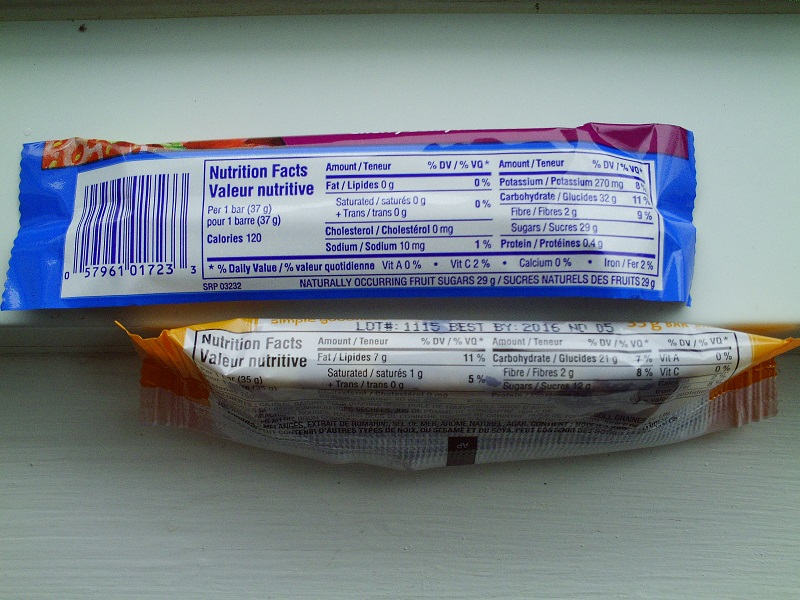“Which one would you choose?” one friend asks me in front of the huge energy bars and chews display of the store we visit. I must admit it is easy to get lost, with the phenomenal offer increase of ready-to-eat products! The market is full of choice. Every ones claim, loud and strong, through nice labels and slogans, to be the GOOD one.
But where is the truth? With the specific cyclists’ needs in mind, I did my little investigation. My suspects: energy bars. My goal: define criteria that allow you to make the right choices in an informed manner!
To perform such an exercise, it is necessary to first learn the needs of our cyclists. I will take the example of a bike tourer who must, for a long time, keep energy level quite steady to arrive on time. As in all endurance event, the main danger, here, is to run out of “juice”. And to pedal without energy for a full day makes it very long… So, to avoid disaster and have a pleasant day, our wheeler will need to favour carbohydrates. And what does that mean, in plain text? It is pretty simple, it is the human body main source of energy! Indeed, it takes much more time and energy, for the body, to transform the other nutrients (fats and proteins) in elements that can be assimilated by the organism. To keep our energy reserves high enough and avoid digestion troubles, our ideal energy bar should contain between 25 and 45 grams of carbohydrates.
If we take the packaging of a food and look at the Nutrition Fact table (you know, this small white table on the back of almost every commercial food product, the one that we read not often enough!), we can identify carbohydrates through their “little names”: fibers, starch and sugars.
Even if they are not central in our investigation, it is nevertheless important to consider other nutrients contained in our snack. In excessive amounts, fats and proteins (our little muscle builders) may cause some unwanted digestive discomfort… Because they are longer and difficult to assimilate by the body, ingestion of a large quantity can indeed cause cramping or bloating. To prevent this kind of unpleasant situation, one should therefore avoid exceeding 7 grams of fats and 10 grams of proteins per 200 calories serving.
With the criteria defined above, I hope it will be easier for you to choose your sugary snack. Up to you, later, to do your own tests to find the perfect frequency or quantity to eat. As every human body is different, it is possible that you have to slightly adjust the quantities to meet your own needs. The most effective is still trying. So get to your bikes and go!

Article by Marjorie Chabot, dietetic technician and outdoor passionate.

